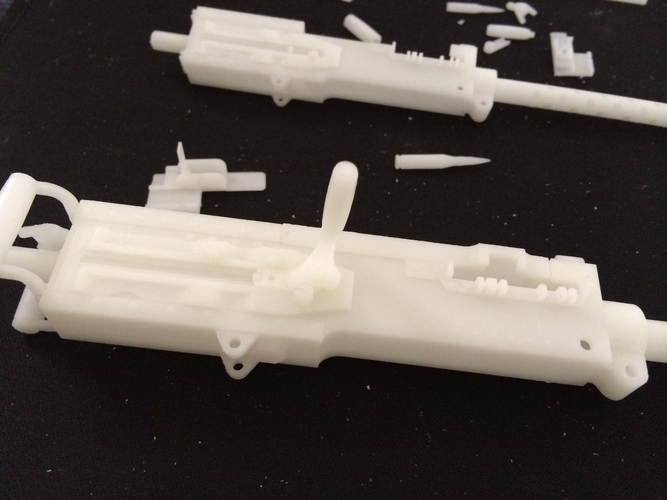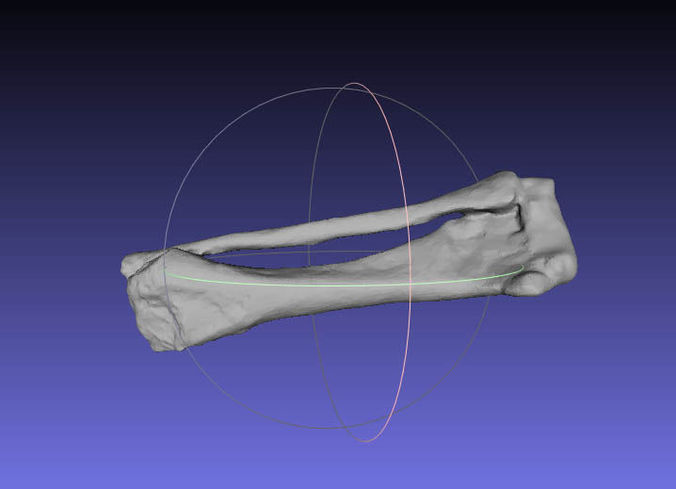- Blog
- Interviews
- Interview with the Winners of 3D Printing in Education Challenge
20 Aug 2015
Interview with the Winners of 3D Printing in Education Challenge
Interviews

We do love the thought of bringing 3D printing to schools and universities. Hosting educational challenges is an enjoyment for us and, as it seems, for our designers, too! Speaking of the challenges, we have recently had a 3D Printing in Education challenge and it's been a blast! Let's reminisce about it, shall we? We had a little interview with the winners of this educational initiative and we leave it here for you to enjoy!
CGTrader: How did you get started in 3D modeling?
Tanya: I went to college for game design and development. Since then, I've been 3D modeling for nearly 10 years now.
Vaishnavi: I took a summer camp in San Jose State University where I was first introduced to 3D modeling and printing. The year after I took that course, I started the 3D Printing club in my high school and I recently set up a Designathon at my school where I taught multiple 3D modeling softwares.
Jeremy: I got started with 3D modeling when I was in college, but it didn't take off until 2011 when my school purchased a Makerbot Thing-O-Matic.
Wang: 3D modeling is my job.
Matt: I got started in 3D modeling and animation developing planetarium productions and digital media opportunities for teens while working for a science center in Kansas City, MO. Shortly after spending a weekend at my first Maker Faire, we got a couple of 3D printers at the science center. I added digitization to my toolset as soon as I heard about 123D catch. The Psittacosaurus skeleton entered in the 3D printing in Education Challenge was actually the first thing I digitized.


Best 3D Printing in Education model - MicroCity Project by Jeremy Sambuca
CGTrader: Where are you searching for the daily inspiration?
Tanya: Google and Pinterest mostly. Online 3D markets and 3D print sites, too. 3dtotal.com is a good site for industry news, tutorials, and viewing other people's work.
Vaishnavi: My daily inspiration comes from my house, high school, and dreams. I usually just look for things around me that I need, are easily broken, or used often.
Jeremy: I find most of my daily inspiration on Twitter. Whether it's people or groups I follow or searching a hashtag, I always find new ways to develop projects for my students.
Wang: Taking orders and draw them.
Matt: My regular inspiration is my passion for paleontology as well as meeting the needs of the people around me. I often digitally restore fossils for 3D printing, removing distortion and sculpting or mirroring missing portions or entire elements. I produce didactic multimedia interactive exhibit components which utilize a lot of 3D models and digitization. My wife regularly needs props for the high school theater productions she directs, so I design and print such things.

First runner-up - Scale Machine Gun by Wang Faye
CGTrader: Why have you decided to try yourself in the Education challenge and how have you came with the ideas for the models for this challenge?
Tanya: The blossom was originally designed as an element that I could use to create gifts to give out and pins for special events. Why I submitted the blossom to the education challenge was because when I was still in k-12, flowers came into play on and off in the science and art classes I took part of as well as school events. For science classes, explaining how plants work and how they affect ecosystems can be boring when people can only look at pictures in a book. Some of the best teachers I had in the past avoided books and explained the subjects using physical flowers and other plants which made learning the subject more interesting. For art classes, flowers were commonly used to explain symmetry vs asymmetry as well for kid's crafts. Flowers don’t last long, but 3d printed ones will.
Vaishnavi: As a high school student, I entered this challenge because I know what the teachers want to 3D print. When I made up my mind to enter this challenge, I started looking for things around my classroom that could be 3D printed.
Jeremy: I believe I came across the challenge through Twitter. Since my MicroCity project was a high with the students and school community, I decided to submit it.
Wang: Those models are used to my models, so they are real things.


2nd runner-up - Carnation Blossom by Tanya Wiesner
CGTrader: How do you see the 3D printing industry in 10 years?
Tanya: 3D printing I can see as becoming something more and more companies will start using to help in the development of their products as well as something more consumers will want to use to create household items. I can also see it as something that would be incorporated into more and more classrooms as time goes by.
Vaishnavi: I see 3D printing expanding to all industries and 4D printing to be very prominent. I believe 3D printing in space will go far and food printing will be very useful in 3rd world countries. I think 3D printers will be in almost every house for daily repair items and to customize objects.
Jeremy: The cost of 3D printing has gone down and the quality has gone up considerable over the past few years. We are almost to a point where you could see one in every household.
Wang: It will be used in many industries, become part of our life.
Matt: Over the next decade, I would predict that digitization, 3D modeling, and rapid prototyping like 3D printing will be much more ubiquitous if not as commonplace in the home as personal computers became in the late 1990s. Popular desktop FDM printers with extruders using spools of plastic filament will come to be supplanted by faster and more precise resin-curing printers which will continue to fall in price, as will the photoreactive media these light-based 3D printers use.

Best portfolio - Portfolio by Matt Christopher
CGTrader: What are the main challenges you are facing in modeling?
Tanya: Trying to decide what I want to create next. I have too many ideas I want to get into sketches and 3D. Time is another factor. Setting time aside to do personal work isn't always an option for me each week.
Vaishnavi: Main challenges I face when modeling is making intricate details or modifying my design to make it printable.
Jeremy: One of the biggest challenges I face as an educator with 3D printing is time for the students to learn new design software. This is why I like Tinkercad so much, there is little learning curve for the students to get excited about 3D modeling.
Wang: Details process, some really small details cannot be printed but I believe it will be resolved soon.
Matt: The challenges I face with modeling mostly involve communicating about those models with colleagues and clients. Many people find this technology and its jargon intimidating. Technophobia is a wall for many that prevents them from even trying to grasp 3D modeling or how to compositionally assess how it can serve them.

1st runner up portfolio - Portfolio by Vaishnavi Dornadula
CGTrader: Any advice for those who are just about to start their career as a 3D designer?
Tanya: If you are new to 3d printing or 3d in general, don’t be afraid to connect with other designers and ask questions. Most designers are willing to share their insight and give tips to help a fellow designer out. For those seeking a career involving 3d, contract work is a good start. Contracting can help you connect and build a strong portfolio as well as help you quickly gain additional experience.
Vaishnavi: Well, I am a sophmore in high school but I would say never give up and always follow your imagination. It is the most powerful tool because the possibilities endless.
Jeremy: Not in any way would I consider myself a 3D designer. I am just an educator who has a knack for 3D design and modeling. If I have any advice to give? Dream big.
Wang: Love what you do, have passion and rigorous attitude.
Matt: For those learning 3D modeling, I recommend exploring the various software that is freely available. Use your passions as inspiration. For example, if you are into dinosaurs, design or remix other 3D dinosaur models. If military history is something that excites you, start with modeling artifacts or vehicles pertinent to that subject. Everything can be modeled, so every interest can drive an aspiring modeler's development. Don't just stick with one tool, but learn all sorts of software as different titles have different strengths. Familiarizing oneself with a variety of user interfaces makes picking up new tools much more intuitive. If you run into a wall, scour the web for your answer. Chances are, other beginners have run into the same wall and have sought advice in various online forums, so the answers or tutorials you need to figure it out and overcome your hurdles are there in online communities.
Comments